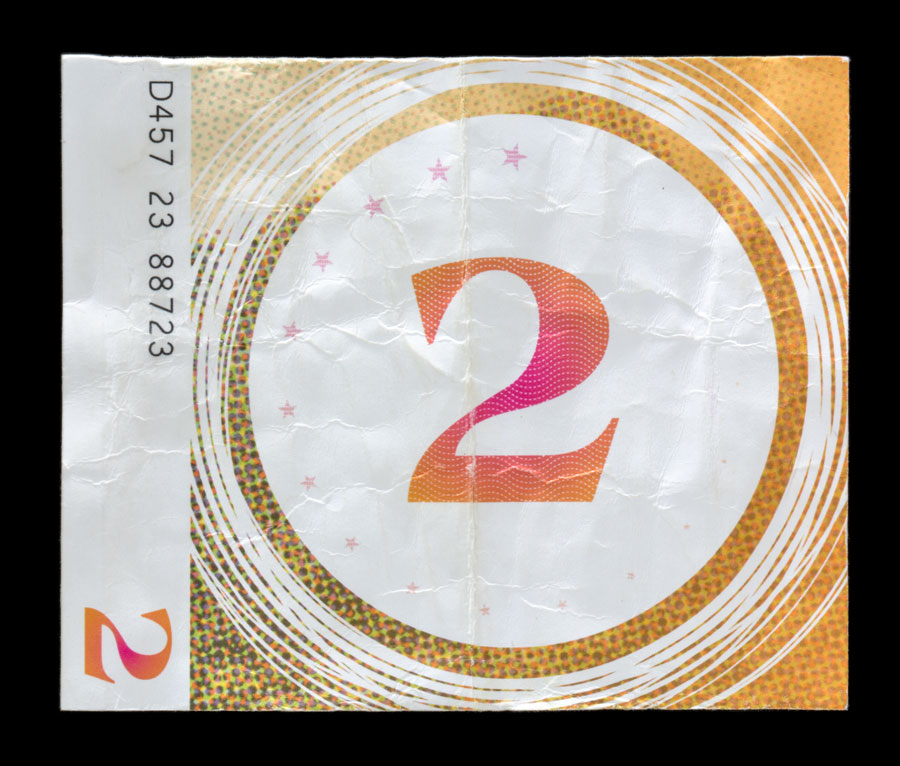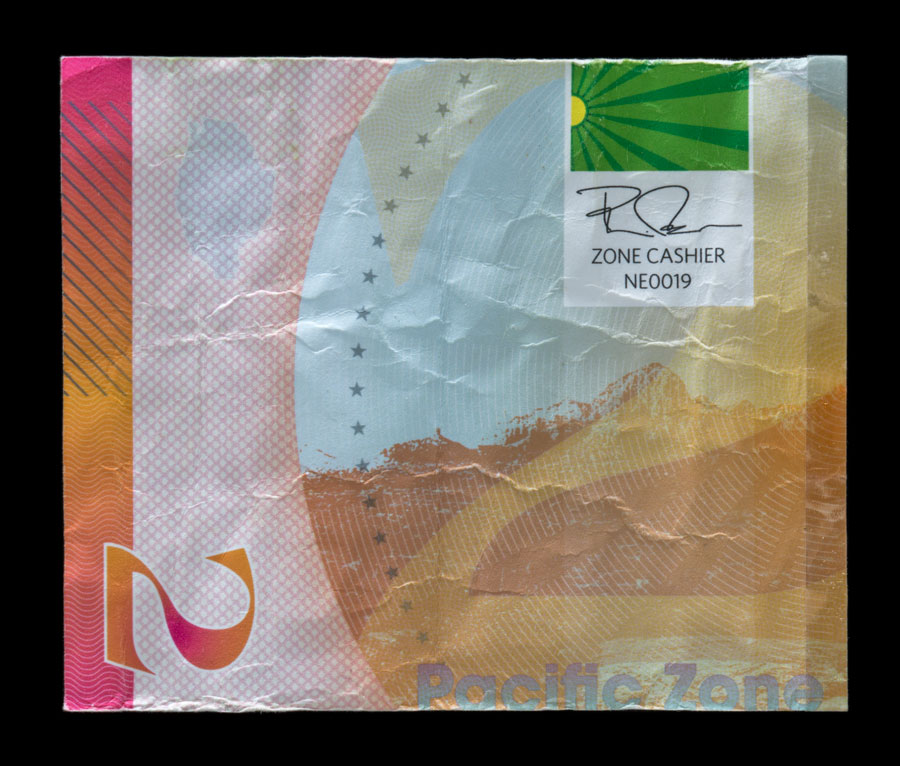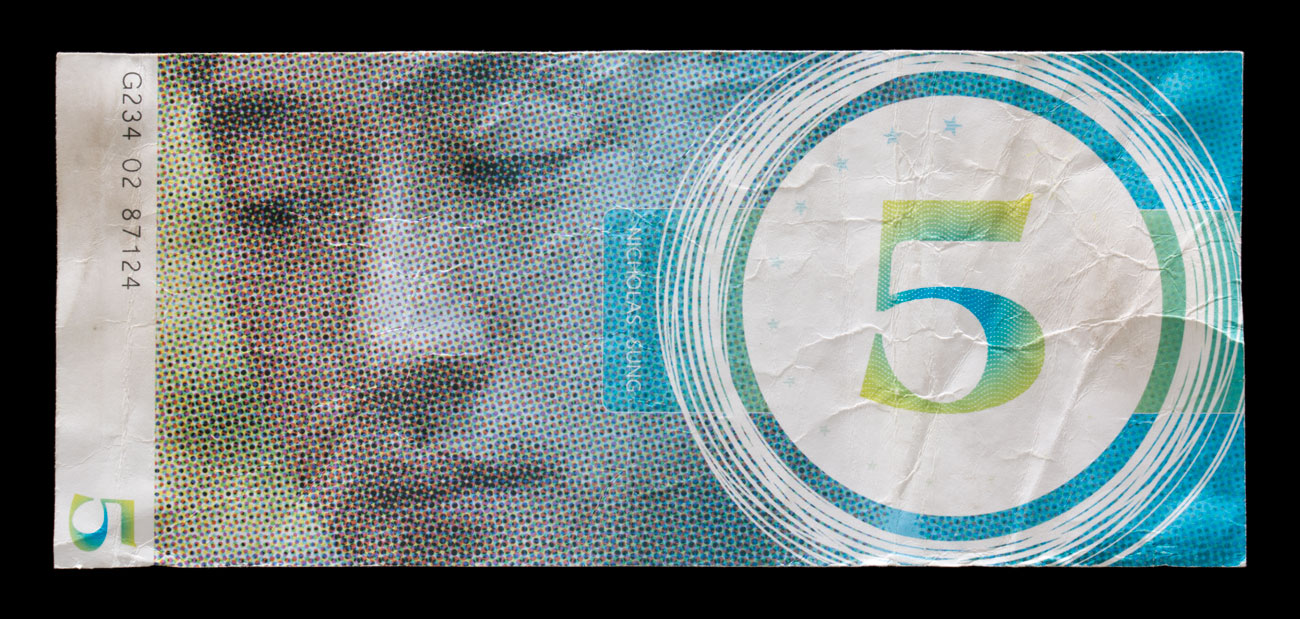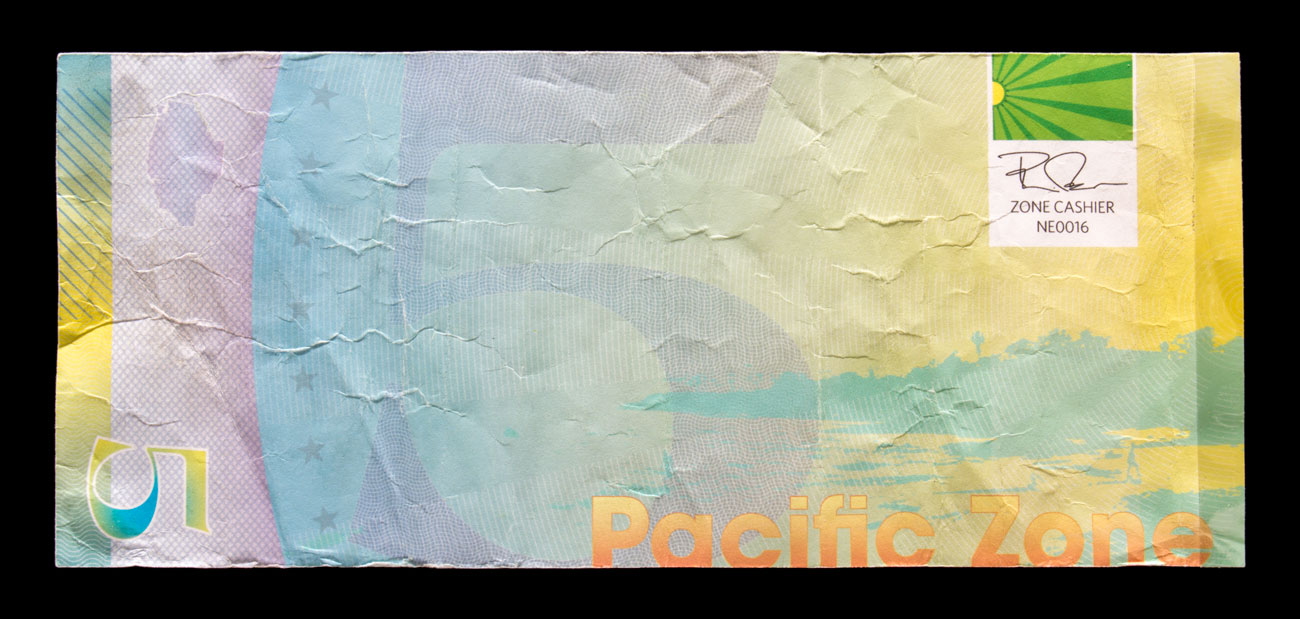$2 bill
2.75” x 3.38” (7 cm x 8.9 cm)
$2 and $5 Bills


1
Flag
The simple design of the Pacific Zone flag seen here features the sun on green rays, presumably a nod to both the “Golden State” nickname of California and the stretch of evergreen forests that once ranged along the coast.
The simple design of the Pacific Zone flag seen here features the sun on green rays, presumably a nod to both the “Golden State” nickname of California and the stretch of evergreen forests that once ranged along the coast.
2
Mountain
Arkologists have identified the landform seen here as Thunder Mountain, which overlooks Sedona, present-day Arizona. In its initial incorporation the Pacific Zone stretched all the way to the present-day Arizona-New Mexico border. However, the move precipitated a series of battles in the southwest, aided by sleeper cells dotted throughout the area. Overstretched, the PZ withdrew its forces to the Colorado River in NE09, which was established as the new PZ eastern border.
Arkologists have identified the landform seen here as Thunder Mountain, which overlooks Sedona, present-day Arizona. In its initial incorporation the Pacific Zone stretched all the way to the present-day Arizona-New Mexico border. However, the move precipitated a series of battles in the southwest, aided by sleeper cells dotted throughout the area. Overstretched, the PZ withdrew its forces to the Colorado River in NE09, which was established as the new PZ eastern border.
3
Hologram
The back of Pacific Zone bills contain a transparent plasticized strip featuring a web pattern in hologram.
The back of Pacific Zone bills contain a transparent plasticized strip featuring a web pattern in hologram.
$2 bill (verso)
2.75” x 3.38” (7 cm x 8.9 cm)

1
Nicholas Sung
Sung rose to prominence in the fledgling Pacific Zone, handily winning the Presidency in the NE04 election. A venture capitalist and co-founder of the Seize social network, Sung’s ruthless methods are credited with holding the Zone together during the Discord Era. He was assassinated in NE13 by members of the Red Ember separatist group while en route to his Presidential retreat in present-day Marin County.
Sung rose to prominence in the fledgling Pacific Zone, handily winning the Presidency in the NE04 election. A venture capitalist and co-founder of the Seize social network, Sung’s ruthless methods are credited with holding the Zone together during the Discord Era. He was assassinated in NE13 by members of the Red Ember separatist group while en route to his Presidential retreat in present-day Marin County.
$5 bill
2.75” x 6.38” (7 cm x 15.2 cm)

1
Map
The faint watermark seen on the $2 and $5 bill outlines the borders of the Pacific Zone, which stretch from present-day Mexico to Canada and encompass the present-day states of California, Oregon, Washington, Nevada, Idaho, and much of Utah.
The faint watermark seen on the $2 and $5 bill outlines the borders of the Pacific Zone, which stretch from present-day Mexico to Canada and encompass the present-day states of California, Oregon, Washington, Nevada, Idaho, and much of Utah.
2
Beach
Researchers believe the back of the Pacific Zone $5 bill depicts Laguna Beach, present-day California.
Researchers believe the back of the Pacific Zone $5 bill depicts Laguna Beach, present-day California.
$5 bill (verso)
2.75” x 6.38” (7 cm x 15.2 cm)

